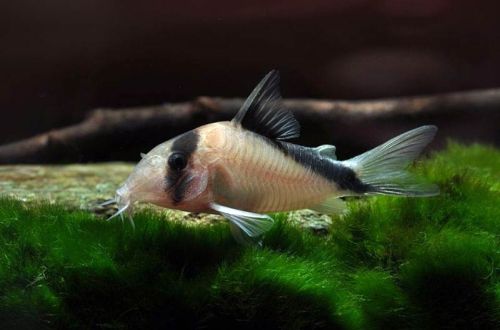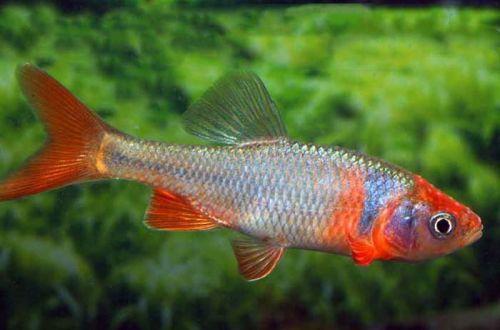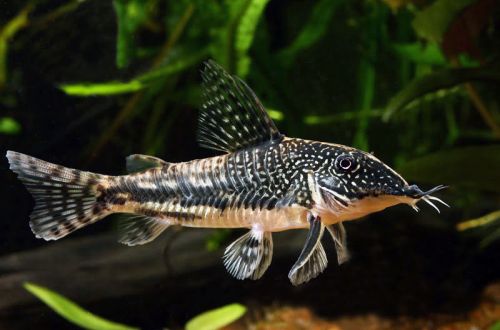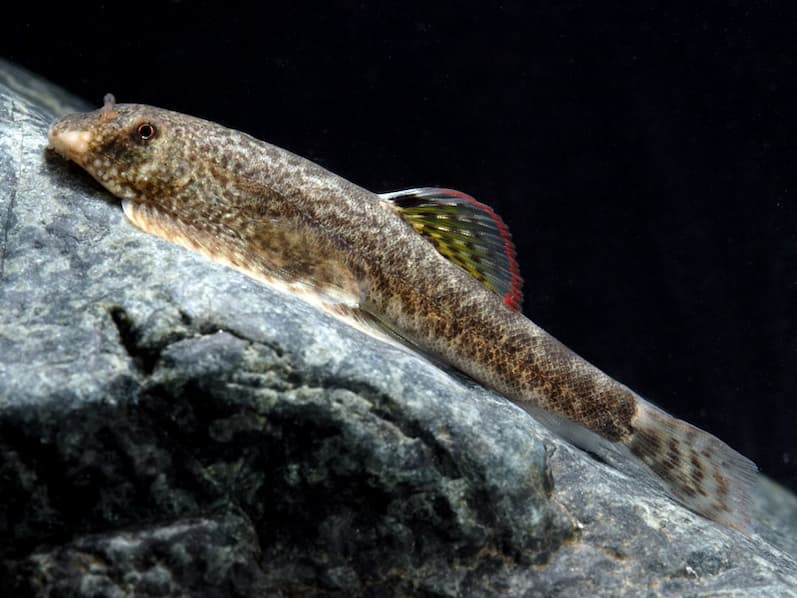
Pseudogastromyson Myersa
Pseudogastromyzon Myers, scientific name Pseudogastromyzon myersi, belongs to the family Gastromyzontidae (Gastromizons). It is considered one of the easiest species to keep in aquariums that mimic mountain rivers.

The fish is native to southeast China. Inhabits mountainous and hilly sections of fast-flowing rivers. A typical biotope is a shallow turbulent stream with stone substrates.
The main export supplies of these fish come from Hong Kong and Guangzhou, the capital of Guangdong Province.
Description
Adults reach a length of 5-6 cm. The fish has a flattened body with large pectoral fins, which help the fish to stay on the surface of stones and boulders, resisting the current. Fins are less needed for swimming. The dorsal fins have a spotted pattern with a red border. Body color is yellow-brown.
The closely related Chinese pseudogastromizon (Pseudogastromyzon cheni), which lives in the same region, also has an identical appearance.
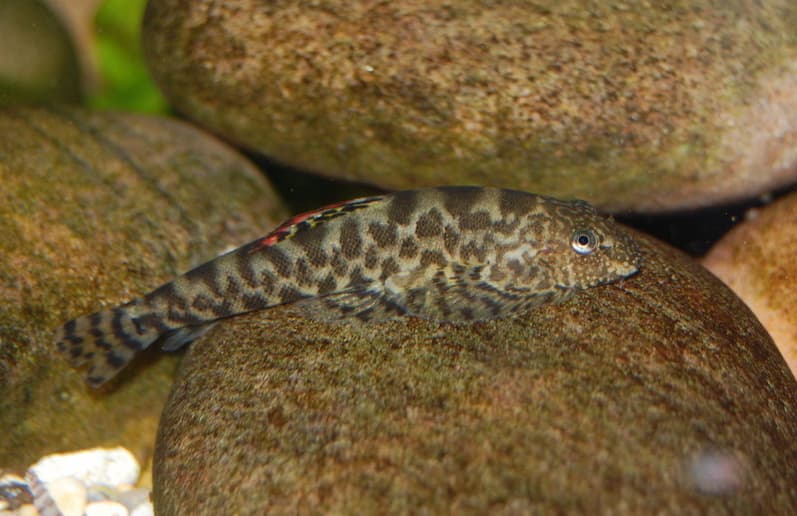
Experts distinguish these species from each other solely by measuring certain morphological features. The first measurement is the distance between the beginning of the pectoral fin and the beginning of the pelvic fin (points B and C). A second measurement must be taken to determine the distance between the origin of the pelvic fin and the anus (points B and A). If both measurements are equal, then we have P. myersi. If distance 1 is greater than distance 2, then the fish in question is P. Cheni.
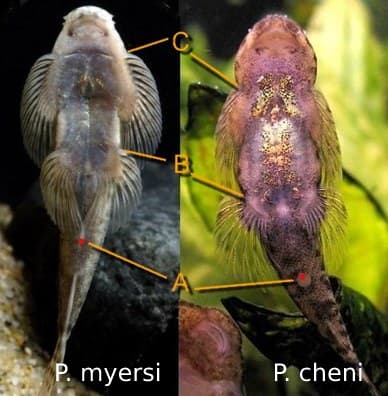
The average aquarist does not need to establish the exact species, since both species require identical conditions.
Brief information:
- The volume of the aquarium – from 100 liters.
- Temperature – 19-24°C
- Value pH — 7.0–8.0
- Water hardness – medium or high
- Substrate type – small pebbles, stones
- Lighting – bright
- Brackish water – no
- Water movement – moderate or strong
- The size of the fish is 5–6 cm.
- Nutrition – plant-based sinking feed
- Temperament – conditionally peaceful
- Content in a group
Behavior and Compatibility
In the wild, fish compete with each other and similar species for limited food resources, but at the same time they need the company of relatives. In the limited space of the aquarium, they react aggressively to relatives. The joint presence of Myers’ Pseudogastromisons is possible in a spacious tank, where everyone will have enough space.
May be compatible with species capable of living in similar conditions of moderate to strong currents in relatively cool water. For example, representatives of the genera Barilius (Barilius Dogaringa), Garra (Garra Rufa, Garra Mullia, Garra Cambodian, etc.), Devario (Bengal Danio, Giant Danio, Malabar Danio, etc.), Rhinogobius ( Taiwan goby), Akysis (Catfish Akisis, Akisis Hendrickson and Catfish-was), Hara (Catfish hara and Catfish-anchor).
Maintenance and care, arrangement of aquariums
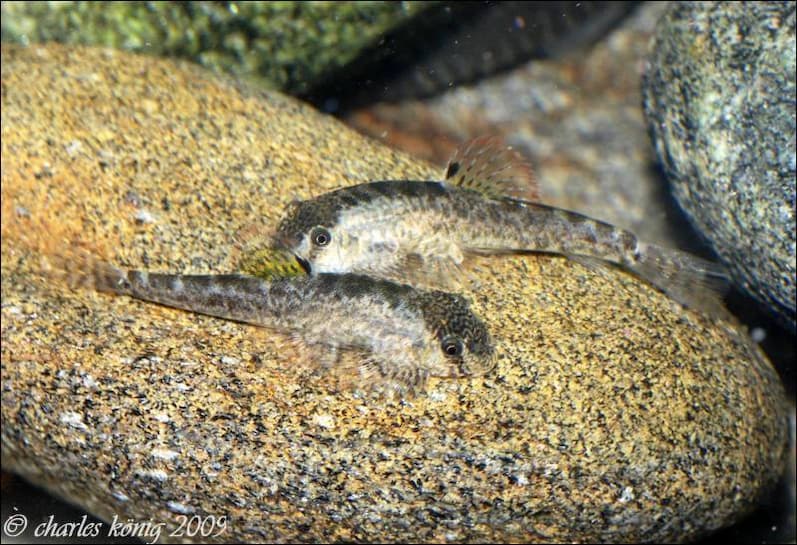
The optimal size of the aquarium for 6-8 fish starts from 100 liters. The main condition for successful maintenance is clean water rich in oxygen and the presence of a moderate or strong current. A productive filter is capable of ensuring the movement of water and a sufficient level of dissolved oxygen.
It is recommended to purchase a filter whose productivity per hour is 10 times the volume of the aquarium. For example, with an aquarium volume of 100 liters, you will need a filter that pumps about 1000 liters through itself.
For a home aquarium, lower values are acceptable, since the above ratio creates a turbulent flow.
Pebbles, stones, boulders, driftwood and other strong elements that cannot be carried away by the flow of water are used in the design.
Live plants are not required. If desired, it is permissible to use aquatic mosses and ferns fixed on the surface of stones and snags.
Light level is high. Bright light stimulates the growth of some algae, which can become an additional source of food.
Food
In the wild, Pseudogastromizons feed on diatoms and filamentous algae, as well as various organisms that live in the algal film. For this reason, it is recommended to encourage the growth of such algae in the aquarium.
The basis of the diet can be sinking feed (granules, tablets) based on plant components. The addition of protein-rich foods such as bloodworms, brine shrimp, etc. is recommended.
Source: FishBase



